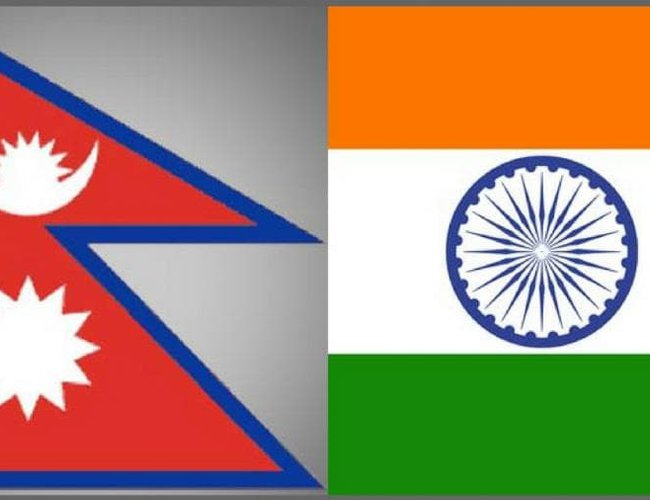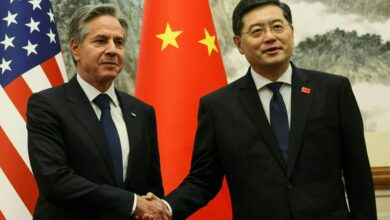NEPAL-INDIA RELATIONS Bound By Destiny
Extreme views at the political level seek to derail Nepal-India relations. However, there are so many commonalities between the two countries that are hard to break
July 7, 2020,
Nepal’s renowned scholar, historian and foreign affairs expert late Rishikesh Shah described Nepal-India relations as complex at the state-to-state level but saw them be very simple at the people-to-people level. Shah argued that the state-to-state relations involved complex diplomatic and national security issues, among others, and they were very formal. However, the people-to-people relations were simple and informal as they were linked by civilization, culture, family ties and religion. This made the relations very strong.
With the rise of the communists in power in Nepal, policymakers started to link all spheres of life in the two countries at the formal level. Linked by land, mountain and river, Nepal-India border is natural and changes from time to time. Similarly, people-to-people relations are also close from elites of Kathmandu to common folks of eastern, central and far-western hills and southern plains. People across the border are connected through their matrimonial relations. As the state started to formalize the natural relations, frictions arose. The new map issued by Nepal to formalize its border, without holding negotiations with India on personal whims of a politician or prime minister, has widened the rift in the bilateral relations.
The new citizenship act strained the matrimonial relations that have existed between the groom and bride, of the eastern and central Nepal with Assam, Darjeeling and Sikkim of eastern India or that of the far-west with Uttarakhand and terai with UP and Bihar and Kathmandu with New Delhi. This is likely to strain the linkages at the people’s level.
Bound by geography, civilization, culture and religion, Nepal-India relations have some unique sides. “Whether the countries are small or big, geography is a major factor which determines the type of relations between the two countries. Geography is not only a permanent element to influence the relations but it is a permanent factor. Geography also determines what kind of relations one state needs to maintain with the other. Along with this, ethnicity, civilization, religious and cultural commonalities are other factors that are supplementary to this. Thus, Nepal-India relations are special as well as unique. Geography determines our destiny and social foundations guide our relations. However, there is a threat of the rise of extremist nationalists in both the countries to disturb these unique relations. Although they will be just part of a temporary phenomenon, extreme nationalism damages our bond. Finally, geography, civilization, culture, ethnicity and religion will prevail. My concern is how to prevent extreme nationalists from taking the lead.”
With the rise of the communists in power in Nepal, policymakers started to link all spheres of life in the two countries at the formal level. Linked by land, mountain and river, Nepal-India border is natural and changes from time to time. Similarly, people-to-people relations are also close from elites of Kathmandu to common folks of eastern, central and far-western hills and southern plains. People across the border are connected through their matrimonial relations. As the state started to formalize the natural relations, frictions arose. The new map issued by Nepal to formalize its border, without holding negotiations with India on personal whims of a politician or prime minister, has widened the rift in the bilateral relations.
The new citizenship act strained the matrimonial relations that have existed between the groom and bride, of the eastern and central Nepal with Assam, Darjeeling and Sikkim of eastern India or that of the far-west with Uttarakhand and terai with UP and Bihar and Kathmandu with New Delhi. This is likely to strain the linkages at the people’s level.
Bound by geography, civilization, culture and religion, Nepal-India relations have some unique sides. “Whether the countries are small or big, geography is a major factor which determines the type of relations between the two countries. Geography is not only a permanent element to influence the relations but it is a permanent factor. Geography also determines what kind of relations one state needs to maintain with the other. Along with this, ethnicity, civilization, religious and cultural commonalities are other factors that are supplementary to this. Thus, Nepal-India relations are special as well as unique. Geography determines our destiny and social foundations guide our relations. However, there is a threat of the rise of extremist nationalists in both the countries to disturb these unique relations. Although they will be just part of a temporary phenomenon, extreme nationalism damages our bond. Finally, geography, civilization, culture, ethnicity and religion will prevail. My concern is how to prevent extreme nationalists from taking the lead.”

Late Rishikesh Shah, Nepal’s renowned historian and intellectual in his article titled Nepal and Outside World, wrote in 1985: “In today’s world no country can live in isolation separating from her neighbor. In every country’s national life, the social, political, economic values, culture factors followed by its neighbor will have a direct impact.”
What late Shah, former foreign minister and diplomat, perceived 32 years ago in his article has come true today. If one looks at the overall state of diplomacy and politics, Prime Minister K.P. Sharma Oli has been leading a radical group chanting anti-Indian slogans to safeguard his personal interest to continue in power. One can easily see how relations are exploited for individual gains.
PM Oli has been riding the waves of power by harping on radical slogans. A few months ago when his post was shaken in several scandals, Kalapani boundary dispute came as Sanjibani or lifesaver for him. He used the relations with India to prove himself a sole savior to protect Nepali nationalism. From publishing the new map, including the territory disputed with India and endorsing it through amending the constitution, PM Oli used every avenue to prove his nationalist credentials to criticizing and condemning India. This time to prove more nationalist than PM Oli politicians from left, right and center all spoiled Nepal’s relations with India.
Having a very little know-how about Nepalese society and its connections with Indian civilization, extremists in India also spared no time to condemn Nepal and Nepali people. Interestingly, an overwhelming majority of the Nepalese population even does not know what has been happening at the political level and elites level.
Anti-Nepal remarks made by India’s extreme nationalists provide the much-needed fuel to Oli’s brand of urban-centric communist extremism to thrive. With his failure to provide effective delivery of goods and services through good governance and contain corruption, PM Oli again used anti-Indian slogans to continue in power. He blamed India for instigating his rivals against his government. Whether from the forum of parliament or street, PM Oli has been accusing its close neighbor to distract from the government’s failure and mismanagement.
Recently, at a function attended by a large number of cadres from the Communist Party of Nepal, Oli accused his rivals, including Pushpa Kamal Dahal, Madhav Kumar Nepal and Jhalanath Khanal of hatching conspiracy against him. He blamed India for encouraging design to dislodge him.
Instigating the radicals of his party, Oli said the Indian Embassy of Kathmandu is active to dislodge him. He claimed that India wants to displace him due to his stand on Kalapani. “If I was ousted from power, no prime minister will dare to speak against the Indian intervention,” said Prime Minister Oli.
With the rise of a new brand of extreme generation, the moderate and traditional views of Nepalese society are suppressed. Not only in Nepal, even in India, the opinions of moderate diplomats and intellectuals is gradually fading.
Despite sharing so many commonalities and deeply rooted foundations, Nepal’s relations with India are currently at their lowest level. Extreme nationalism will damage Nepal-India relations temporarily, as late Shah noted, what will prevail at last is our common destiny determined by geography, culture, religion, ethnicity and civilization.
Even today, the extreme views emerging at the political level have not broadly affected the people at the grassroots level. However, the extreme view disseminated through the media is poisoning the minds of the younger generation who were groomed in an unstable society following the removal of Nepal’s tradition-based system in 2006 under an agreement facilitated by Indian officialdom.
With the abolition of the unitary Hindu Kingdom and the establishment of federal, secular republic, some of the civilizational foundations of Nepal-India relations have already been dismantled. The rise of radicals, who do not have any attachment to civilization and core values, gave birth to a whole new generation of extremes in all the sectors.
If one looks at the recent actions and reactions in Nepal, the Oli brand of anti-Indian nationalism has an impact upon the cadres of Nepal Communist Party and the neutral young generation of the 1990s who have little knowledge about the linkages at the level of civilization, religion, culture and geography.
This may be the reason even Nepali Congress and Madhesh based parties, which are close to India in their democratic ideology, backed Oli’s brand of nationalism supporting the amendment of constitution last month to incorporate disputed territory in Nepal’s new map.
As a party that had sided with Communist Parties to promulgate the present constitution, Nepali Congress’s support to amend the constitution is understandable. Strangely, even Madhesh based parties, which boycotted the constitution and organized a violent protest against it, were compelled to back the constitutional amendment bill which justifies anti-Indian rhetoric of Prime Minister Oli.
“As international relations are globalized, no country can survive in isolation. Situated between India and China, Nepal has to adjust to the international situation. However, it is very important for Nepal to understand its own core interest in its geography and linkages with other factors,” late Shah writes.
“Nepal’s Himalaya not only divides two great civilizations and power of South and north. However, Nepal’s Himalayas are perennial sources of water to irrigate vast land in India. Himalaya has revered places for millions of people of India and Nepal in their culture, religion, civilization and literature. Lord Krishna said I am mighty as the Himalayas and several important Hindu religious shrines lie in Nepal’s Himalayas.”
Mukti Chhetra reminds the salvation of Jad Bharat, a saint and King, before Satya Yuga. Kagbeni with Ramayan and Telecho as Glacier lake are where Bhusandi preached Ramayan. Damodar Kunda is known as the source of Saligram and the heavenly abode of water. The Himalayas remind the religious and cultural connectivity of both countries and civilizations. Similarly, India considers the Himalayas as a security barrier in modern days.
“With so many deep gorges linking Nepal and Tibet, they have common culture and ethnicity between the people living in the northern areas of Nepal. Manjushree traditions came from Central Asia and Nepal has the influence of Tibetan Buddhism. Given the complex patterns of relations, Nepal has very limited space. Radical thoughts used to play one neighbor against other harms Nepal’s interest,” writes Late Shah.
“There is no need to repeat the importance of our continual close and friendly relations with India. Although the two countries do not have equal inter-dependency both countries have fundamental interdependency. Both countries need to respect it.”
“Nepal-India relations have numerous strong linkages. From military recruitment to military training and common stand-in non-alignment and regional meetings. Both countries have an open and common border which is for continual and extensive movement. Both countries have huge trade and Indian private investment is the highest in Nepal. As a landlocked country, Nepal depends upon India to access the global market through the sea,” said Shah. “Nepal India relations are complex at the state to the state level. However, it is very simple at the people to people level. “
Although Nepal-India relations have ups and downs at the state to the state level, what is required is to further strengthen the relations based on civilization, culture and religion which has a strong foundation. The question remains how these relations are established without monarchy, a traditional force. For now, moderate forces of both countries need to come out to alter the situation and bring our relations back on track


